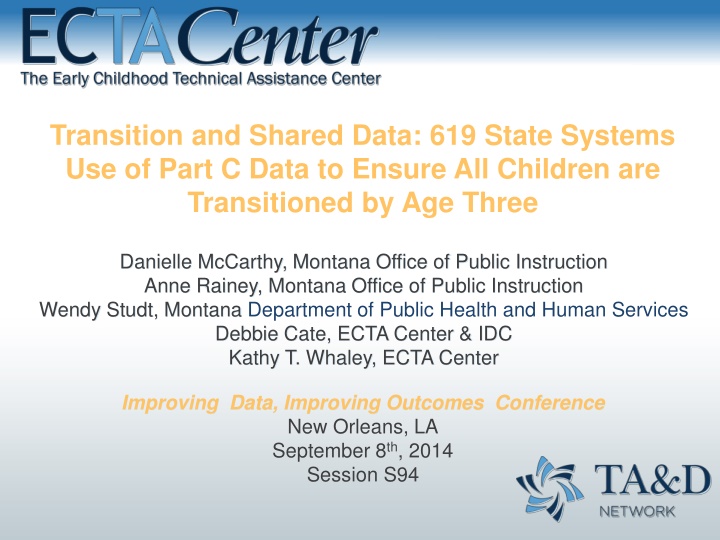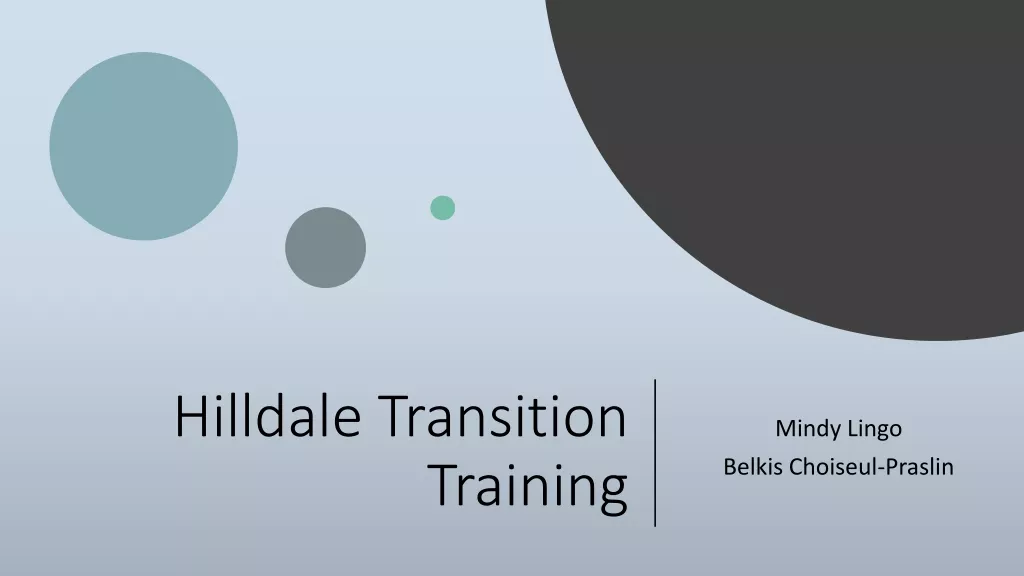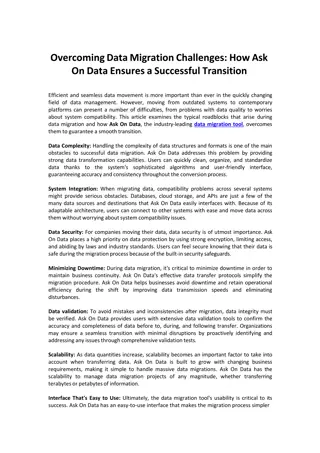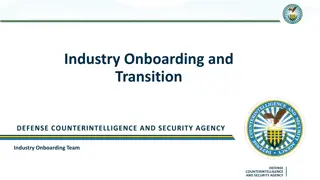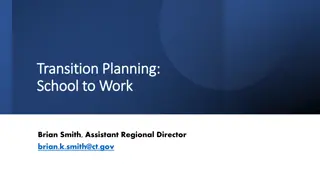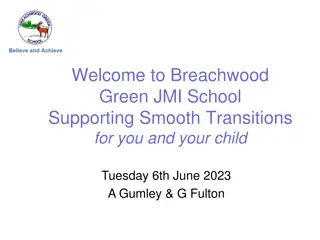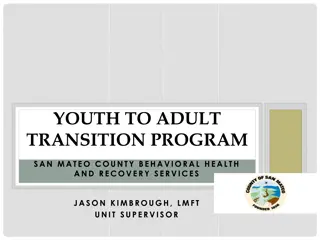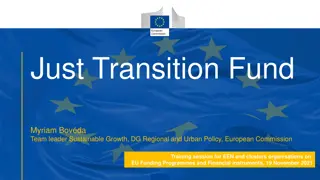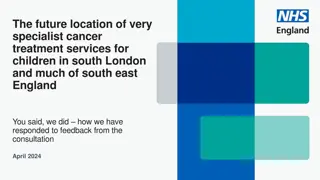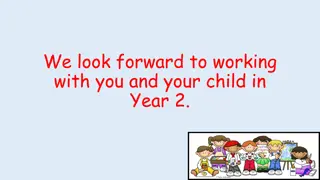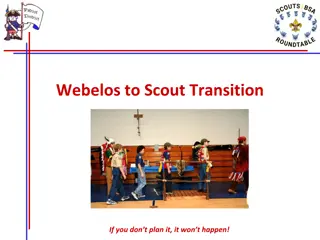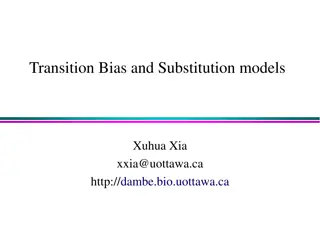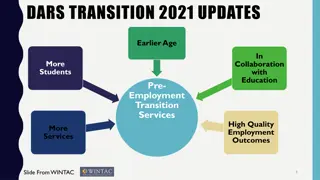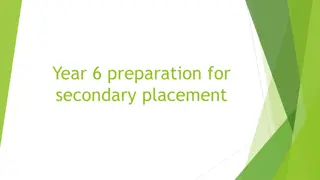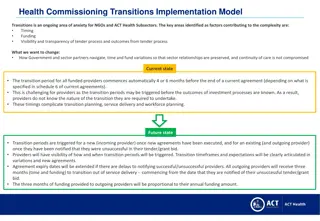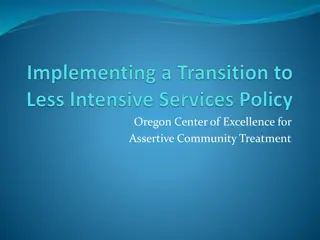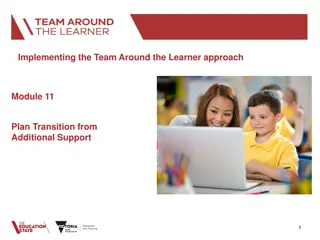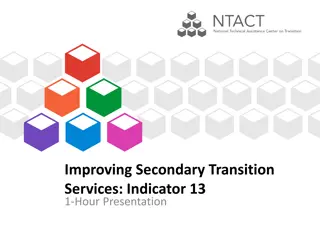Ensuring Smooth Transition for Children Using Part C Data
Explore the utilization of Part C data in transitioning all children by age three, as discussed in the Improving Data, Improving Outcomes Conference. Delve into objectives, transition notification procedures, SEA/LEA notifications, and the definition of potentially eligible policies. Gain insights on data collection processes and sharing, strengths, challenges, and available resources for supporting the transition process effectively.
Download Presentation

Please find below an Image/Link to download the presentation.
The content on the website is provided AS IS for your information and personal use only. It may not be sold, licensed, or shared on other websites without obtaining consent from the author.If you encounter any issues during the download, it is possible that the publisher has removed the file from their server.
You are allowed to download the files provided on this website for personal or commercial use, subject to the condition that they are used lawfully. All files are the property of their respective owners.
The content on the website is provided AS IS for your information and personal use only. It may not be sold, licensed, or shared on other websites without obtaining consent from the author.
E N D
Presentation Transcript
Transition and Shared Data: 619 State Systems Use of Part C Data to Ensure All Children are Transitioned by Age Three Danielle McCarthy, Montana Office of Public Instruction Anne Rainey, Montana Office of Public Instruction Wendy Studt, Montana Department of Public Health and Human Services Debbie Cate, ECTA Center & IDC Kathy T. Whaley, ECTA Center Improving Data, Improving Outcomes Conference New Orleans, LA September 8th, 2014 Session S94
Objectives Share APR C8 & B12 transition indicator trend data Share information about Indicator C8 & B12 data collection and sharing processes Provide a state highlight for using Part C notification data by an SEA Discuss strengths, challenges and identify potential supports and resources
3 Transition Notification (Referral) Prior to a toddler exiting the Part C early intervention program, if that toddler is potentially eligible for services under Part B of the IDEA, the lead agency must notify the SEA and the LEA where the toddler resides that the toddler on his or her third birthday will reach the age of eligibility for services under Part B. ( 303.209(b)(1))
4 SEA/LEA Notification and Opt-out SEA/LEA notification must be consistent with any opt-out policy the State has adopted. ( 303.209(b)(2)) States can adopt opt-out policy that permits a parent to object to the disclosure of the child find personally identifiable information (PII). ( 303.209(b)(2) & 303.401(e)) Opt-out policy includes notifying parent of the limited disclosure of PII for child find purposes and allowing a specified period of time for the parent to object. ( 303.209(b)(2) and 303.401(e))
Transition Notification and Potentially Eligible Lead Agency defines potentially eligible policy. In many states all children receiving Part C services are considered potentially eligible. Characteristics of PE policies include eligible children with IFSPs age of two Not attaining IFSP outcomes Served under established condition or developmental delay categories 5
Transition Notification (Referral) Content of the SEA and LEA notification must include information to assist Part B child find responsibilities Must include: Child s name Child s date of birth Parent contact information May additionally include: Service Coordinator name & contact information Language(s) spoken by the child and family 6
7 Previous Indicator Requirement for C8B Sub-indicator (B) Notification to LEA, if child potentially eligible for Part B: Part C regulations specify that the Lead Agency will "Notify the local education agency for the area in which the child resides that the child will shortly reach the age of eligibility for preschool services under Part B"
8 Procedural Changes for Part B SEA has to have a mechanism in place to receive and use the Part C notification data LEA/LEAs need to have a way to use, share and coordinate these data SEA/LEAs need to understand potentially eligible and opt-out requirements/policies School districts (LEAs) were responsible for establishing policies and procedures for acting upon referral.
9 Part C Revised Regulations and APR Requirements New APR Monitoring Priority: Notified (consistent with any opt-out policy adopted by the State) the SEA and the LEA where the toddler resides at least 90 days prior to the toddler s third birthday for toddlers potentially eligible for Part B preschool services; New Measurement: Percent = [(# of toddlers with disabilities exiting Part C where notification (consistent with any opt-out policy adopted by the State) to the SEA and LEA occurred at least 90 days prior to their third birthday for toddlers potentially eligible for Part B preschool services) divided by the (# of toddlers with disabilities exiting Part C who were potentially eligible for Part B)] times 100.
10 Revisions to APR Requirements States not required to report using revised Indicator 8B in 2012 APR, (FFY Reporting Period 2010-11), prior regulations in effect APR February 2013 (FFY Reporting Period 2011-12), states had flexibility in reporting APR February 2014 (FFY Reporting Period 2012-13), revised indicator was required.
Indicator Results Indicator C8 96% (a) IFSP transition steps & services (b) Notification to SEA & LEA 91% (c) Transition conference 95%
Notification to LEA (C8B) Number and Percent of States Reporting Census Approach Yes 36 (64%) No 16 (29%) Not Given/Unclear 4 (7%)
Part C Exit Data 2010 2011 16% 40% 8% 4% 11% 12% 14% 39% 7% 4% 11% 11% Completion of IFSP prior to max age Part B eligible Not eligible Part B - exit to other program Not eligible Part B - exit with no referrals Part B eligibility not determined Withdrawal by parent Note: chart does not contain all exit categories
Using Part C Data What mechanism does your state use to share data from Part C to Part B? Does your state provide electronic reminders of key transition dates for individual children? What definition of potentially eligible is your state using? What processes are in your transition agreements?
Part B, Indicator 12 Early Childhood Transition Percent of children referred by Part C prior to age three and who are found eligible for Part B, and who have an IEP developed & implemented by their third birthday.
Indicator Results, 2012-13 Early Childhood Transition
20 Additional transition information SY 2012-13 Average Low High Percent of children not eligible 13% 0% 35% Percent of parent refusal to provide consent Percent of late referral to Part C 8% 0% 41% 3% 0% 13%
Part B, Indicator 12 Data Sources Over Time Number of States by Year Data Collection Source FFY 2006 FFY 2007 FFY 2008 FFY 2009 FFY 2010 FFY 2011 State data system 33 34 33 44 45 45 Monitoring, includes system- wide file review 8 2 5 6 6 5 Other (LEA spreadsheets) 7 13 15 2 3 4 Not reported or unclear 7 4 2 4 2 2 Total 56 56 55 56 56 56
Child Specific Data Strategies Part C Web-based Data System, Fully Integrated System C and B Access data for ALL Children by name or ID in one system Part B Part C Web-based Data System, C and B Integrated Components - ALL Children by name or ID, sharing some child specific data into 619 system Part B Web-based Data System, C and B Integrated Components - some child specific data migrated into SEA system, or between C and SEA Table or Report/Template with Part C information - ALL Children by name or ID shared with SEA Table or Report/Template with Part C information merged or compared with SEA data Part C information ALL Children by name or ID shared w/ SEA and LEA Part C information compared or merged at local level Part C information ALL Children by name or ID shared w/ SEA and LEA No Comparison of Part C data at the child level
Montana Part C to Part B Transition C8 Indicator: FY 2007 FY 2008 FY 2009 FY 2010 FY 2011 FY 2012 C8 % 100% 100% 100% 100% 100% 100% B12 Indicator: SY 2007-08 SY 2008-09 SY 2009-10 SY 2010-11 SY 2011-12 SY 2012-13 B12 % s 71.5% 70.5% 82.3% 93.1% 94.1% 96.7%
Discussion Topics Data Sharing Specifics Supports, such as written agreements Communication and/or PD strategies Collaborative data analysis (C and 619) Use of exit data Data verification Follow up, TA, or CAPs State and local data use
